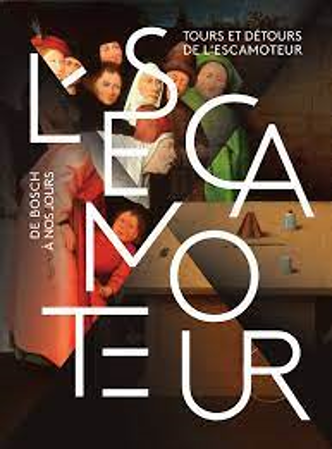
Cat. Saint-Germain-en-Laye 2016
Tours et Détours de L’Escamoteur de Bosch à Nos Jours (Blandine Landau, Patrick Le Chanu, Pierre Taillefer and Agnès Virole) 2016
[Exhibition catalogue (Saint-Germain-en-Laye, Espace Paul-et-André-Vera, 16th November – 31st December 2016), Saint-Germain-en-Laye, 2016, 52 pages]
At the end of 2016, this small catalogue accompanied a small exhibition focusing on the Boschian Conjurer panel which is preserved in Saint-Germain-en-Laye. It has four short contributions. In L’Escamoteur et son donateur Patrick Le Chanu and Agnès Virole tell something more about the man who bequeathed the panel to the city in 1872, the local notary Louis-Alexandre Ducastel. The painting dates from the sixteenth century and was most likely produced in Brabant (Antwerp). On December 13, 1978 the panel was stolen by the terrorist faction Action Directe. On February 2, 1979 it was regained.
L’Escamoteur est-il toujours une star en 2016? (is The Conjuror still a star in 2016?) is a question that Le Chanu then tries to answer. Most authors concur on the meaning of the panel: a satire on folly and credulity. Currently, the painting is attributed to a talented artist from the first half of the sixteenth century working in the manner of Bosch. According to dendrochronology, the wood may have been painted from 1498 on. Is the painting therefore less worth? In the sixteenth century, good copies were more valued than they are today.
In L’Escamoteur, les copies et le marché Blandine Landau offers an overview of the 18 versions of this Boschian Conjurer known to us today, 15 if we exclude repetitions (see the list on pp. 24-25). Apparently, since her lecture during the Bosch Conference in ’s-Hertogenbosch (April 2016) one new version has turned up.
Finally, in La figure de l’escamoteur de la Renaissance à nos jours Pierre Taillefer offers a concise overview of conjurers that appear in art and literature after 1500. In fact, the motif was already known in ancient Greece.
[explicit 17 April 2023]